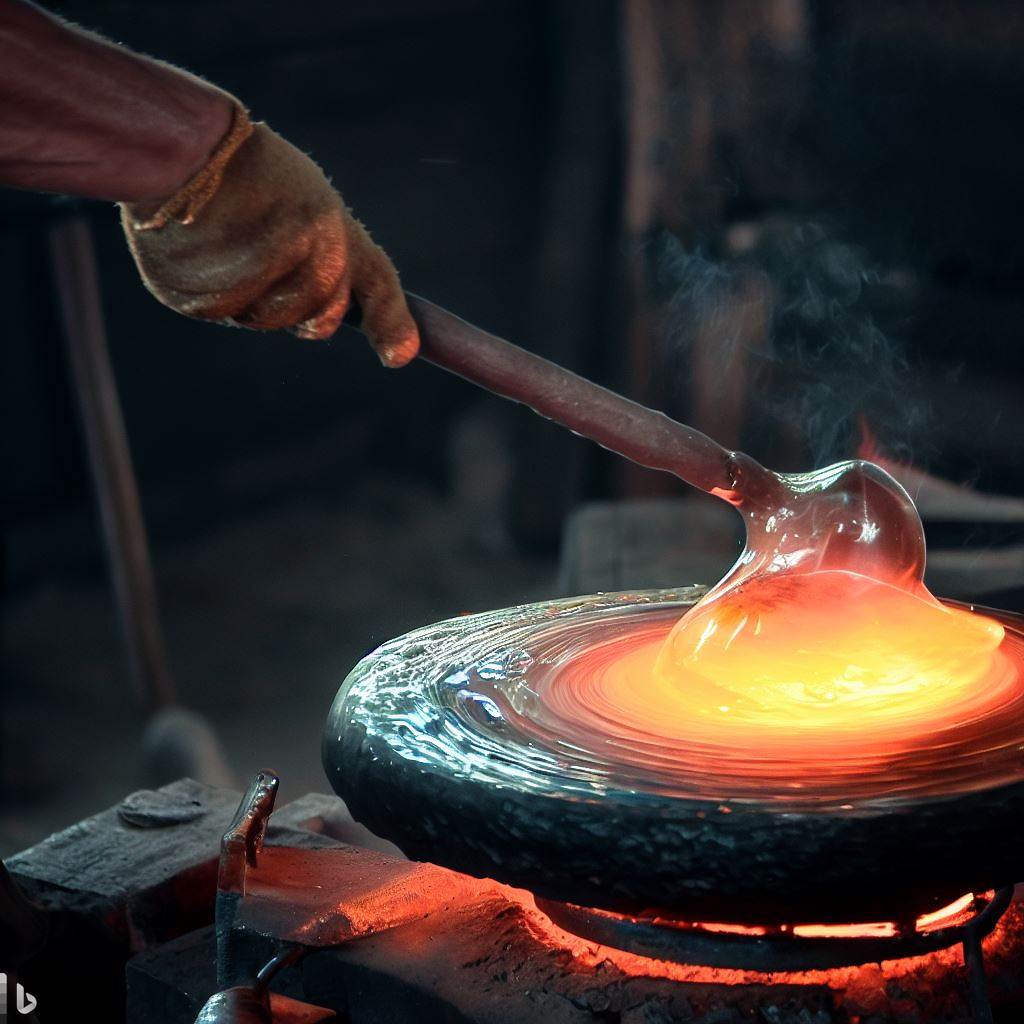The Chemistry of Glassblowing: A Scientific Explanation
Beneath the mesmerizing artistry of glassblowing lies rigorous science governing everything from heating glass to cooling finished pieces. Physics, chemistry, and engineering all play crucial roles. Understanding these scientific foundations behind manipulating molten glass illuminates the meticulous craft underpinning the art form.
Glass Composition and Chemistry
On a molecular level, glass consists of silicon dioxide mixed with various oxides to lower its melting point. Soda ash, potash, and limestone make the silica pliable at achievable furnace temperatures around 2,300°F. Controlled ratios allow tunable properties in hardness, workability, and optical clarity.
Introducing elements like gold, copper, and cobalt infuse color through ionic interactions. Managing chemical reactions at molten states generates the exact material behaviors required for blowing techniques. Mastering these compositions took glassmakers centuries of scientific experimentation.
Thermal Expansion Drives Blowing
Heating glass expands it since molecular vibrations can move more freely, increasing volume. This thermal expansion principle allows glassblowers to inflate gathers through applied heat. Strategically cooling areas with paddles controls expansion. Blowing maximizes inflation by introducing gas pressure within the hot glass.
Careful monitoring of heat convection, conduction, and radiation allows the precise control of expansion essential to glassblowing.uos Pyrometers measure temperature gradients to target heating and cooling optimally across the glass form. Thermo-chemical mastery undergirds the entire process.
Finding Optimal Working Temperatures
While molten glass flows at any temperature exceeding 1,000°C, its behavior at different thermal bands varies enormously. Around 1,300°C, glass easily drips and sags since viscosity is low. Temperatures approaching 1,500°C prove ideal for blow tube insertion and initial expansion. The glass thickens noticeably by 1,600°C, allowing detailed tool shaping.
Proper temperature gives glassblowers control over malleability. Furnaces uniformly hold glass at ideal working ranges, usually between 1,150°C to 1,250°C. Thermal imaging cameras help monitor changes as glass flows from furnace to working area, ensuring the gather stays within precise bounds.
The Science of Annealing Glass
After blowing, glass still holds internal stresses that weaken finished products through fracturing. The process of annealing removes these tensions by slowly cooling glass to room temperature in precision ovens. First, glass is held near the annealing point around 515°C to relieve inner strains before gradual cooling over days.
This prolongued tempering allows the glass molecules to rearrange themselves into a lower-energy relaxed state as they harden. Well-annealed glass gains dramatically increased durability, less breakage, and crystal clarity.
Chemistry of Glass Coloring and Opacity
While pure glass appears transparent greenish, adding elements during melting creates the rainbow hues prized in fine glassware. Gold, copper, cobalt, cadmium, and selenium each impart specific colors through ion exchange. Opaque glasses form when crystallization is encouraged through phosphorus or fluorine rather than suppressed.
The chemical interactions between glass compositions and element additions took ancient artisans extensive trials to perfect. Extensive chemistry knowledge tailors color and opacity to artistic intent rather than random chance.
Glassblowing Safety Through Chemistry
Safe studio operation depends on mitigating health hazards from toxic heavy metal fumes and airborne silica particles. Proper ventillation removes dangerous vapors while respirators filter out microscopic particles generated while working molten glass.
Thorough cleaning and containment procedures reduce exposure to these known carcinogens. Understanding chemical dangers allows developing protective protocols to help glass artists stay safe while creating.
An Alchemical Symphony of Art and Science
Observing glassblowers choreograph a perfect gathering, shaping, coloring, and cooling of molten light easily inspires a perception of magic. Yet undergirding every step is centuries of accumulated technical knowledge. Physics quantifies each motion and reaction. Chemistry elucidates material intricacies. Engineering enables new possibilities. Without this scientific foundation, glass would remain an abstract curiosity rather than a refined art medium. When art and science harmonize through human passion, blowpipes, and furnace heat, their duet sings with beauty and meaning.
